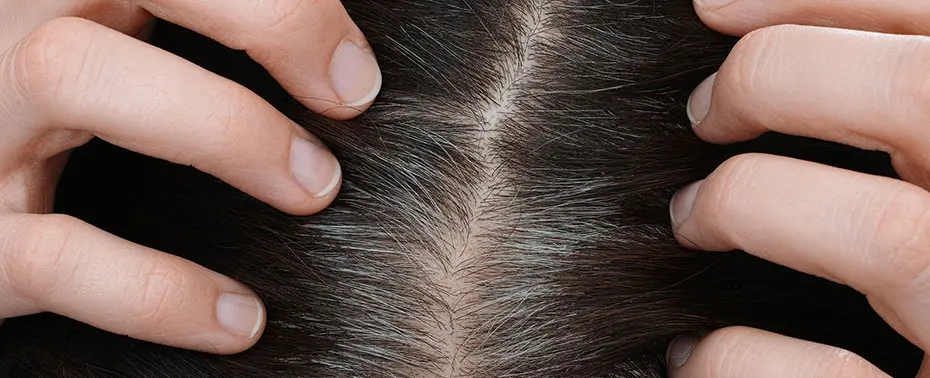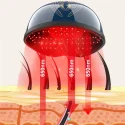2023-05-30
Hair is an important part of our appearance, so it is interesting to understand the process and mechanism of hair growth. Hair growth is a complex process that involves four distinct stages, each with its own unique characteristics and length of time. In this article, we'll take an in-depth look at the four phases of hair growth, anagen, catagen, telogen, and efflux, and reveal how these phases work together.

First, let's take a closer look at the four stages of hair growth.
Growth period:
The anagen phase is the main phase of hair growth, and it is also the longest. During this stage, the hair follicles are very active and the hair will grow at a rate of about 0.3 to 0.4 mm per day. For most people, the growing season usually lasts between 2 and 7 years, but this length can vary from individual to individual. During the anagen phase, the cells of the hair are constantly dividing and growing to form new hair fibers, thus allowing the hair to grow longer.
catagen:
Anagen is the transitional phase that connects the anagen and telogen phases. During this stage, hair stops growing and is relatively static. It usually only lasts a few weeks or so. During catagen, the hair gradually separates from the follicle, and the hair stops receiving nutrients and blood supply. This is a transitional phase that prepares the follicle for the next phase.
Telogen:
Telogen is an important phase of the hair growth cycle. During this stage, the follicles are dormant and hair no longer grows. The telogen period usually lasts from months to years, depending on the individual. About 85% to 90% of the hair is in the telogen phase, while the remaining hair is in the growth phase or shedding phase. Telogen is the phase in which the hair follicle recharges and prepares to grow again.
exogenous period:
The exogenous phase is the final phase of the hair growth cycle, also known as the shedding phase. During this stage, old hair is gradually shed, allowing new hair to grow from the follicle. Normally, we lose about 50 to 100 hairs every day, which is a normal physiological phenomenon. The new hair will push the old hair out, so that the hair maintains its normal density and renewal.
These four stages work in harmony with each other to form the cycle of hair growth. While each person's hair growth cycle may be different, overall, hair goes through these stages continuously, allowing for continuous growth and renewal.
In addition to understanding the four stages of hair growth, there are a few other factors that affect the rate and health of your hair. Here are some factors that may affect hair growth:
Genetic factors: The growth rate and growth cycle of hair are determined to a certain extent by genetic factors. Some may have a faster growth rate and longer growth cycle, while others may be relatively slow. This explains why some people can grow long hair with ease, while others find it slow to grow.
Age: As we age, the rate of hair growth may slow down. When young, the hair growth cycle is shorter, and as we age, the growth cycle may lengthen, resulting in slower hair growth. In addition, age is also associated with hair quality and density, as hair may become more brittle and thinner.
Nutrition and Health: Good nutrition and health are essential for hair growth. Hair needs adequate nutrients, such as protein, vitamins and minerals, to support its healthy growth. Being deficient in key nutrients or having a medical condition, such as anemia or thyroid problems, can cause hair growth to be affected.
Lifestyle and care habits: Lifestyle and care habits play an important role in hair growth and health. Excessive use of hot tools, frequent coloring, tight hairstyles, and improper shampooing and conditioning can damage the health of your hair, making it brittle and prone to breakage. Maintaining a healthy lifestyle, including a balanced diet, regular exercise, and proper hair care, can promote hair growth and health.
Environmental factors: Environmental factors, such as climate and pollution, can also affect hair growth. Extreme weather conditions, dry or humid environments, and exposure to pollutants and chemicals can all lead to damaged hair and stunted growth.
Understanding the mechanisms and factors influencing hair growth can help us take better care of our hair and keep it healthy and shiny.
Cell division and new hair formation
The key to hair growth is the division of cells within the hair follicle and the formation of new hair. The hair follicle is the basic unit of hair growth and it is located in the deep layer of the scalp. Each hair follicle contains germinal cells, which are responsible for hair growth and regeneration.
During hair growth, the cells within the hair follicle undergo constant division and proliferation. This process is called cell division. Cell division results in the creation of new cells, which gradually move up and form new hair fibers. These new cells gradually build up, allowing the old hair to gradually push outward.
The main constituent of hair is a protein called keratin. Inside the hair follicle, new cells produced by cell division gradually transform into keratinocytes. These keratin cells form the fiber structure of the hair, giving it strength and elasticity.
Inside the hair follicle, the production of new cells and the formation of the hair fiber is an orderly and complex process. Within the hair follicle are different types of cells that have specific functions and locations. During cell division, some cells are responsible for forming the outer layer of the hair fiber, which gradually harden and give the hair its appearance. Other cells are responsible for forming the internal structure of the hair, giving it strength and support.
At the same time, the cells in the hair follicle are also connected with the surrounding blood vessels and nerve network. These blood vessels provide oxygen and nutrients to the hair follicles, energy and raw materials for the division of cells and the formation of new hair. The neural network affects hair growth by regulating blood supply and hormone levels within the hair follicle.
It is important to note that the rate and quality of hair growth may vary from person to person. It depends on a variety of factors including genetics, health, and environmental factors. Some people may have rapid hair growth and healthy hair, while others may experience slower growth or poorer quality hair.
In summary, hair growth is a complex and precise process that involves the division of cells within the hair follicle and the formation of new hair. The mechanism of cell division and new hair formation that grows can help us better understand how to promote healthy hair growth.










